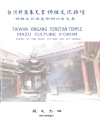New approaches to understanding religious women’s involvement in monastic reform, demonstrating how women’s experiences were more ambiguous and multi-layered than previously assumed.
Over the last two decades, scholarship has presented a more nuanced view of women’s attitude to and agency in medieval monastic reform, challenging the idea that they were, by and large, unwilling to accept or were necessarily hostile towards reform initiatives. Rather, it has shown that they actively participated in debates about the ideas and structures that shaped their religious lives, whether rejecting, embracing, or adapting to calls for ‘reform’ contingent on their circumstances. Nevertheless, fundamental questions regarding the gendered nature of religious reform are ripe for further examination.
This book brings together innovative research from a range of disciplines to re-evaluate and enlarge our knowledge of women’s involvement in spiritual and institutional change in female monastic communities over the period c. 1000 – c. 1500. Contributors revise conventional narratives about women and monastic reform, and earlier assumptions of reform as negative or irrelevant for women. Drawing on a diverse array of visual, material and textual sources, it presents ‘snapshots’ of reform from western Europe, stretching from Ireland to Iberia. Case-studies focussing on a number of different topics, from tenth-century female saints’ lives to fifteenth-century liturgical books, from the tenth-century Leominster prayerbook to archaeological remains in Ireland, from embroideries and tapestries to the rebellious nuns of Sainte-Croix in Poitiers, offer a critical reappraisal of how monastic women (and their male associates) reflected, individually and collectively, on their spiritual ideals and institutional forms.
Tabla de materias
1. Debating Identities: Women and Monastic Reform in the Medieval West, c. 900-1500 –
Julie Hotchin and Jirki Thibaut
2. Liturgy and Female Monastic Hagiography around the Year 1000: A
lecture croisée of the
Life of Liutrud, the
Second Life of Glodesind of Metz and the So-called
Pontificale Romano-Germanicum –
Gordon Blennemann
3. Remakers of Reform: The Women Religious of Leominster and their Prayerbook –
Katie Anne-Marie Bugyis
4. The Materiality of Female Religious Reform in Twelfth-Century Ireland: The Case of Co-Located Religious Houses –
Tracy Collins
5. Women as Witnesses: Picturing Gender and Spiritual Identity in a Twelfth-Century Embroidered Fragment from Northern Germany –
Julie Hotchin and Vera Henkelmann
6.
Mulieres Religiose and Cistercian Nuns in Northern Italy in the Thirteenth Century: A Choice of ‘Order’ –
Elena Vanelli
7. Circulation of Books and Reform Ideas between Female Monasteries in Medieval Castile: From Twelfth-Century Cistercians to the Observant Reform –
Mercedes Pérez Vidal
8. Women, Men and Local Monasticism in Late Medieval Bologna –
Sherri Franks Johnson
9. Building Community: Material Concerns in the Fifteenth-Century Monastic Reform –
Jennifer Edwards
10. Who Made Reform Visible? Male and Female Agency in Changing Visual Culture –
Katharina Ulrike Mersch
11. Nuns, Cistercian Chant and Observant Reform in the Southern Low Countries –
John Glasenapp
Index
Sobre el autor
JIRKI THIBAUT is interested in female religious life in the Early and High Middle Ages. Her Ph D research (Ghent University with the University of Leuven, Belgium) focused on how women religious negotiated their institutional identity in ninth- to eleventh-century Saxony.












